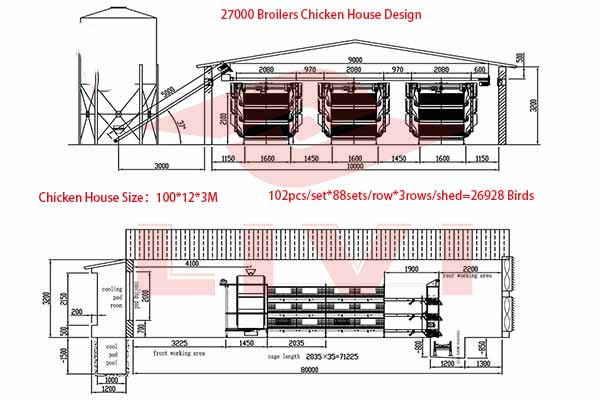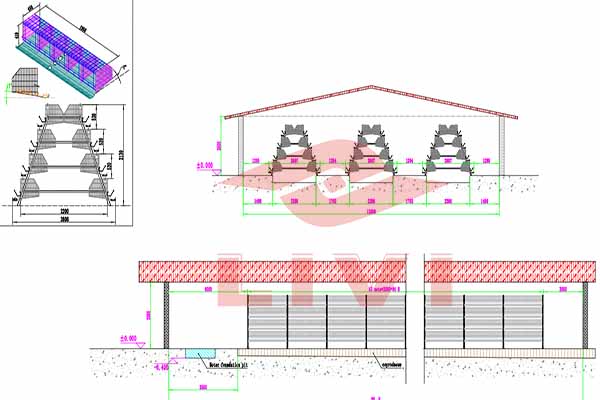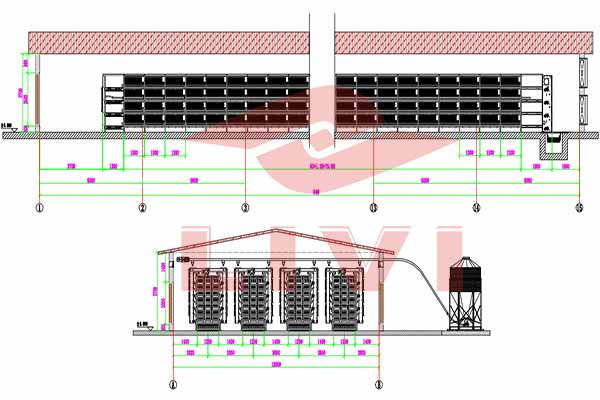Poultry Climate Control System for 200,000 Chickens in Togo: An Essential Guide
Understanding the Needs of Large-Scale Chicken Farms
Running a poultry farm with 200,000 chickens requires efficient climate control to ensure optimal growth and health of the birds. In Togo, where the climate can be challenging, implementing a reliable climate control system is crucial. In this article, we will discuss the importance of a poultry climate control system for farms with such a high capacity and provide essential information for both farmers and investors.
Key Components of a Poultry Climate Control System
1. Temperature Regulation
– The ideal temperature for raising chickens is between 70-75°F (21-24°C).
– Using advanced heating and cooling systems ensures a consistent and comfortable environment for the birds.
2. Humidity Control
– High humidity can lead to health issues like respiratory infections.
– Dehumidifiers and proper ventilation systems help maintain the humidity at a comfortable level.
3. Air Circulation
– Adequate air circulation is essential for preventing disease and keeping the birds healthy.
– Fans and ventilation systems help maintain optimal air quality and temperature distribution.
4. Lighting Systems
– Poultry require a light schedule to simulate natural day and night cycles.
– Timers and automated lighting systems are crucial for maintaining the birds’ well-being.
Benefits of a Climate Control System
– Improved Growth Rate: By providing an optimal environment, the growth rate of the chickens can be significantly increased.
– Reduced Mortality: A controlled environment minimizes the risk of diseases, resulting in lower mortality rates.
– Energy Efficiency: Modern climate control systems are designed to be energy-efficient, reducing operational costs.
Case Study: Poultry Climate Control System in Togo
Let’s take a look at a successful poultry farm in Togo that implemented a climate control system for 200,000 chickens:
– Farming Company: Poultry Producers of Togo
– Capacity: 200,000 chickens
– System Components: Advanced heating, cooling, dehumidification, air circulation, and lighting systems
– Results: Increased growth rate by 15%, reduced mortality by 10%, and a 20% decrease in energy consumption.
How to Choose the Right Climate Control System
When selecting a climate control system for your poultry farm, consider the following factors:
– Size of the Farm: Ensure the system can accommodate your farm’s capacity.
– Local Climate: Choose a system that can handle the specific climate conditions of your region.
– Budget: Consider the initial investment and long-term operational costs.
Conclusion
Implementing a poultry climate control system for a farm with 200,000 chickens in Togo is a wise investment. It ensures the health and growth of your chickens while reducing operational costs. Contact us today to learn more about our free chicken farm design plans and equipment quotes.





